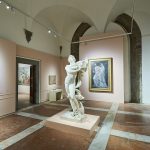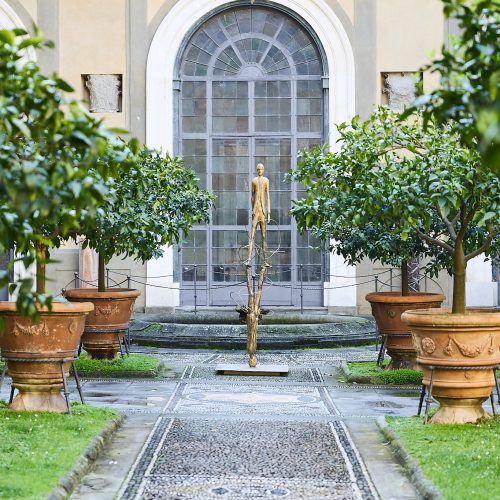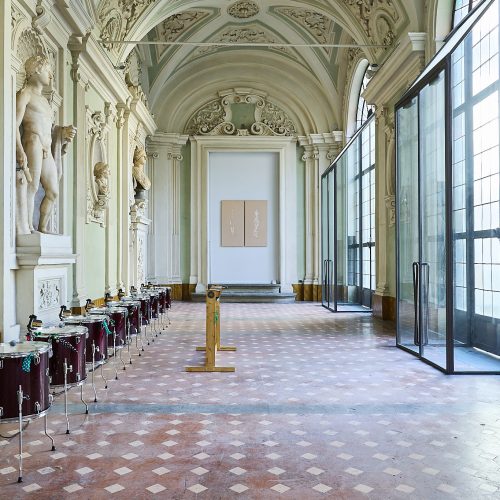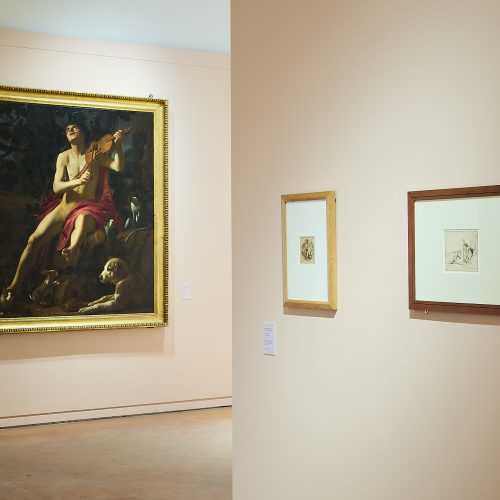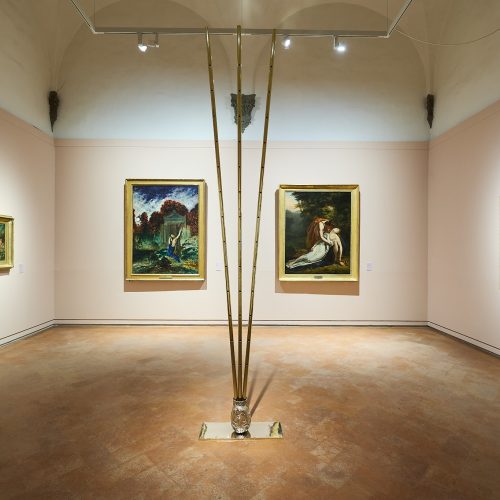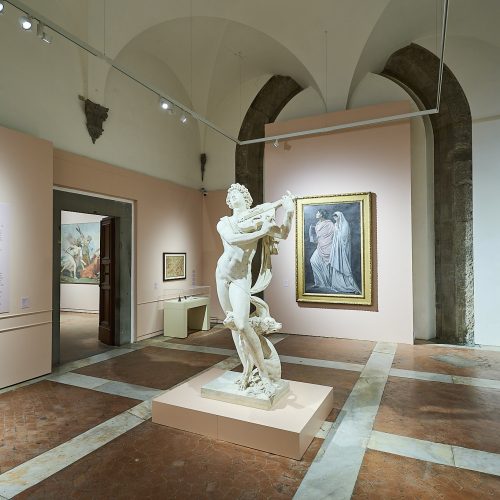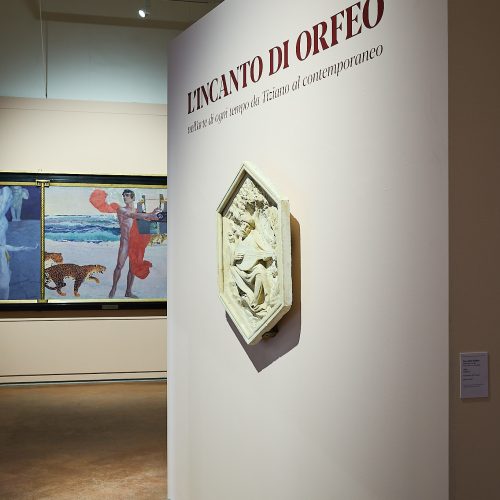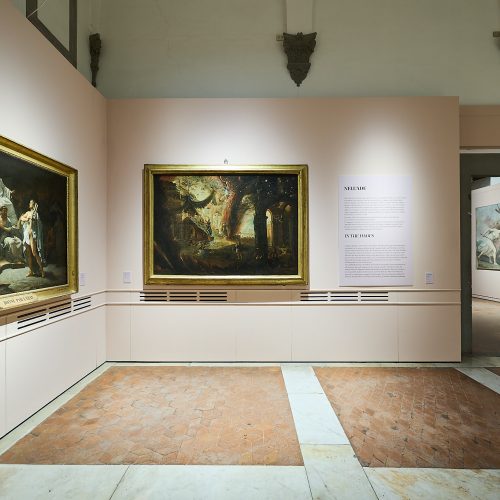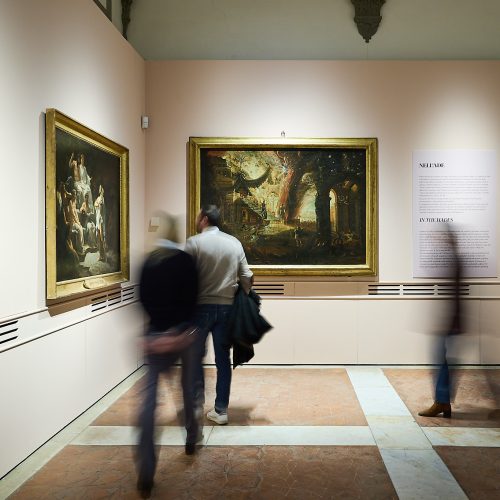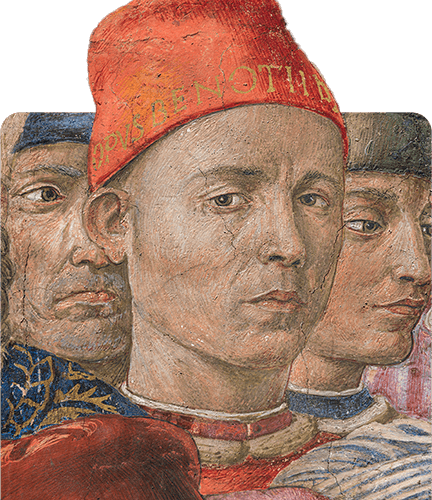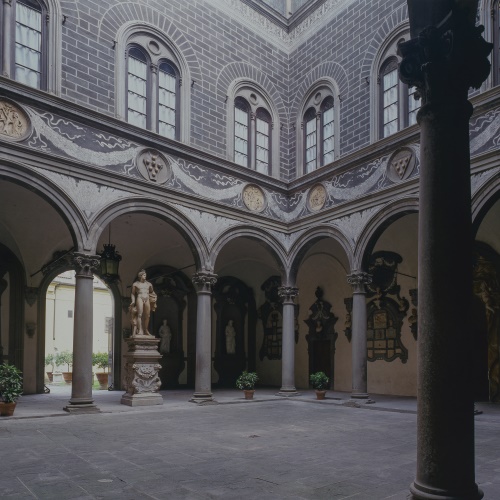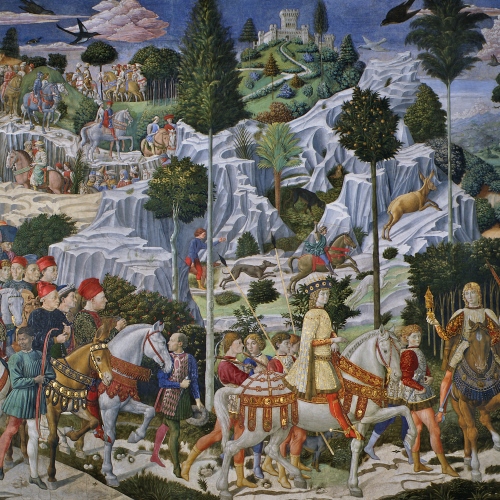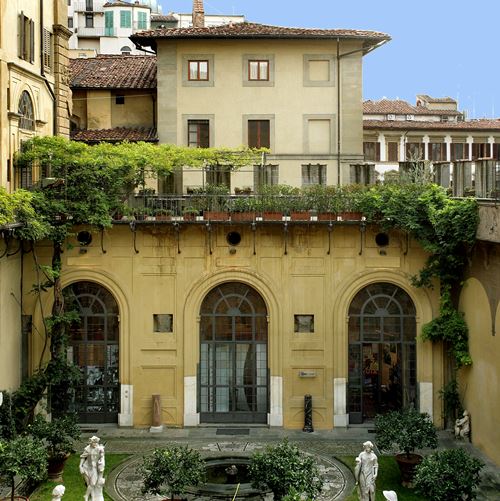L’incanto di Orfeo
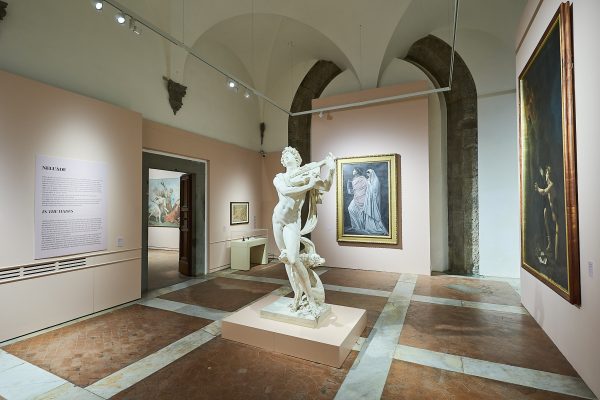
to 08 September 24
A major exhibition dedicated to Orpheus, a key figure in the classical world, and his infinite interpretations from ancient to contemporary art. 60 works from the most important museums in the world.
Is titled L’incanto di Orfeo (Orpheus Enchantment), the grand exhibit curated by Sergio Risaliti and Valentina Zucchi after a project conceived by the Director of the Museo Novecento, promoted by Città Metropolitana di Firenze and organized by MUS.E, will be hosted in Palazzo Medici Riccardi from 20th March through 8th September 2024. The event will showcase approximately sixty works of art devoted to one of the most meaningful and immortal figures of Greek mythology, running the gamut from paintings to sculptures, drawings, manuscripts, installations, and films from classical antiquity to the present day.
First and foremost, the superb Neo-Attic marble bas-relief from the National Archaeological Museum of Naples depicting Orpheus, Eurydice, and Hermes in the very moment when the legendary bard loses his beloved for the second time, this time forever. This mythological episode was a major source of inspiration for the poet Rainer Maria Rilke, author of Sonnets to Orpheus. On display also works by Titian, Parmigianino, van Honthorst, Bruegel the Elder, Rembrandt, Delacroix, Moreau, Redon, Feuerbach, De Chirico, Savinio, Melotti, Twombly, on loan from prestigious Italian and international cultural institutions, including the Uffizi Gallery in Florence, the Louvre Museum in Paris, the Mart di Trento e Rovereto, the Kunsthistorisches Museum and the Belvedere in Vienna, the MANN and the Palazzo Reale in Naples, the Musées de Beaux-Arts in Blois and Marseilles, the Museo Nazionale del Bargello, the Accademia Carrara in Bergamo, the Museo di San Marco, the Biblioteca Laurenziana and Biblioteca Riccardiana in Florence, and from private collections and the Archives of the Teatro del Maggio Fiorentino.
This exhibit explores the deepest roots of the myth built around the multifaceted and metamorphic figure of Orpheus: a poet and a music composer, the travel companion of the Argonauts, the ill-fated and desperate husband of Eurydice, a hopeless widower torn to pieces by the fury of the Bacchantes.
His image dominates and shines in Palazzo Medici Riccardi. It is no coincidence that the project for this exhibition stems from the stunning marble group sculpted by Baccio Bandinelli, Orpheus Enchanting Cerberus– which originally featured a lyre – placed in the main courtyard of the Medici palace as evidence of the attractiveness of this myth for Florence, to then explore the various episodes that marked the life of the bard. Orpheus was a privileged subject in Florentine art and sculpture, next to the emblematic figures of Heracles, David, and Judith. The son of the Muse Calliope and the Thracian mythological king Oeagrus (or of Apollo, based on other versions) is found as early as the 15th century on one of the tiles of Giotto’s Bell Tower and was reserved a special place in the study and construction of the classical era during the Renaissance from literary, philosophical, and political perspectives. The interest in Orpheus developed at the time of Cosimo the Elder and Lorenzo the Magnificent thanks to the artists, scholars, philosophers, and poets that pivoted around the Medici family, as is evident by the numerous works dedicated to his figure.
And precisely during this extraordinary period of philology and experimentation with arts and humanities, Agnolo Poliziano (who was a close acquaintance of Lorenzo the Magnificent and the translator in Latin of the Orphic Argonautica) wrote the drama Fabula di Orpheo (The Fable of Orpheus)– an invaluable specimen of this work from the Biblioteca Riccardiana is showcased in this exhibit together with a precious illuminated anthology of the Orphic Hymns from the late 15th century, attesting to the cultural interest that developed in that period for Neoplatonism. Marsilio Ficino, Pico della Mirandola, and Cristoforo Landino pinpointed Orpheus as one of the founding fathers of Prisca Philosophia, a concept threading through theology, philosophy, and poetry, and reserved paramount attention to the study of the Orphic Hymns and the scholars that in the classical antiquity had construed and divulged the myth of Orpheus, including Virgil, Ovid, and Plato, after the initial fragmentary references in the works of ancient Greek tragedians– suffice it to mention Aeschylus and Euripides. The Medici milieu’s fascination with Orpheus was manifest in the early 16th century, when the cultured Pope Leo X, via the mediation of the governor of Florence, Cardinal Giulio de’ Medici, commissioned Baccio Bandinelli to sculpt the statue that is today displayed in the courtyard of the palace: this sculptural group, at the heart of this exhibition, stood as the symbol of the peaceful age and concord that the Medici wished to usher in Florence. Even Cosimo I de’ Medici did not escape fascination with Orpheus and wanted to be portrayed as him in the painting by Agnolo Bronzino, ideally transferring onto himself the enchanting and civilising power that distinguished the Thracian poet. In fact, Ovid narrated that the enchantment of his singing accompanied by a lyre could charm wild animals and trees, and even attract the rocks, thus establishing harmony and serenity on earth. It is no coincidence that one of his early feats, as narrated by Apollonius of Rhodes in the Argonautica, was to bewitch the Sirens, and that even the Furies felt their cheeks moistened with teardrops for the first time after listening to his inspiring music. Thanks to his closeness with the god Apollo, who gave him a precious lyre as a gift, Orpheus is often connected with Dionysus and magical arts: he had knowledge of the mysteries of nature and human soul, of the conundrums of life, and was even able to go deep into the bowels of the earth. He is described as a psychopomp when he descended into the underworld to soften the hearts of Hades and Persephone with his music, begging them to bring his lost wife Eurydice back to life.
The definitive loss of Eurydice at the threshold of the upper world, when he could not resist turning to look at her, is one of the most popular images in western art, depicted and represented in endless versions. Worthwhile mentioning is that Euridice, a musical drama by Jacopo Peri and Giulio Caccini to a libretto by Ottavio Rinuccini (the libretto is on display in this exhibition), was first staged at Palazzo Pitti in Florence in 1600 in the framework of the multifarious celebrations for the marriage of Maria de’ Medici and King Henry IV of France; all critics agree that this early form of poetical composition accompanied by music contains the seeds for the great lyric opera which would find its apex with Gluck’s Orfeo in the 18th century. The staging of Euridice had such resonance that it inspired famous sculptures devoted to Orpheus, including the acclaimed work by Pierre Franqueville, executed for Florence-native Girolamo Gondi who lived in France and later moved to Versailles (on display in this exhibition).
The image of Orpheus as the sublime emblem of the power of arts, as well as of human weaknesses, desires, and folly, is found throughout the centuries: his vicissitudes embody the crucial phases of human life, which unfolds between love and death, aspiration and inspiration, surrender and challenge, sublimation and failure.
Orpheus is a multifaceted and archetypical figure: a music composer and a bard, a minister of sacred mysteries, a conductor of souls to the afterworld. His moving and inspiring songs betray pearls of wisdom, gnostic truths, hermetic revelations. He was torn to pieces and beheaded by the Bacchantes, who were blinded by anger when rejected after the death of Eurydice, however his myth survived over the centuries: he was the absolute protagonist in Monteverdi’s music, in Baroque allegories, in the 18th century, and during the Romanticism, which highlighted the sublime features of the love shared by Orpheus and Eurydice (evidenced in the heart-wrenching painting by Ary Scheffer on display in this exhibition), or the dark, tenebrous descent into the underworld of Hades, or his disturbing tragic death; he was later the focus of attention of Symbolist masters, such as Redon and Moreau, and inspired Apollinaire, who would mark the rebirth of Orphism and Hermetism in Paris, the home of 20th-century avant-gardes.
The mythological bard would likewise exert extreme fascination on Jean Cocteau, who devoted many of his drawings to his figure, in addition to a play, Orphée, and two acclaimed films, Orpheus from 1950 and Testament of Orpheus from 1959. Orphism also cast a spell on Igor Stravinsky who, in 1947, composed his moving Orpheus, staged with choreography by George Balanchine. Other painters in the 20th century yielded to his magnetism, from Giorgio De Chirico to Alberto Savinio, Fausto Melotti, and Ettore Colla, whose works are showcased in this exhibition, as well as poets, including Rilke and Dino Campana, as evidence of the multiple rebirths of Orpheus and Orphism that have reached the present day since Calvino, Pavese, Bufalino also dealt with his myth, and even a contemporary popular singer, Roberto Vecchioni, seems to remind us that “once and for all, it’s Orpheus when there’s song” (R.M. Rilke).
The exhibition will allow us to retrace and examine the myth of Orpheus thanks to a rich selection of masterpieces of art from all times, beginning with the stunning and iconic painting by Gerard van Honthorst. The gallery space will recount his adventures with the Argonauts and will resound with his powerful enchanting music, which was able to captivate the fiercest of creatures; it will tell of the death of Eurydice, killed by the bite of a snake and mourned by the poet, and portrayed in the superb paintings by Titian, Delacroix, and Moreau; it will chronicle his dramatic descent into the underworld and his return to the upper world (with its powerful interpretation by Anselm Feuerbach), and the second and ultimate loss of his beloved; it will testify to his last song and the beastly fury of the Bacchantes, in the painting depicting the decapitated head of Orpheus by Odilon Redon.
Figurative works will be displayed next to invaluable manuscripts from Biblioteca Riccardiana and Biblioteca Laurenziana, including an illustrated version of Ovid’s Metamorphoses dating to the Medici period with notes by Poliziano. In the spotlight, there will also be musical works inspired by the myth of Orpheus, thus highlighting its diffusion through diverse cultural frameworks over time, raised as an emblematic figure not only in classical antiquity, but also during the Renaissance, and in modern and contemporary epochs. A special section of the exhibition is devoted to set and costume designs created by artists for shows staged at the Maggio Musicale Fiorentino, exemplified by Giorgio De Chirico’s superb creations.


